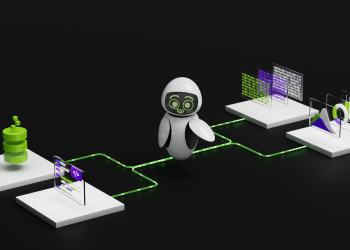MIT’den Yenilikçi Genom Düzenleme Araştırması
MIT’nin McGovern Enstitüsü ve Broad Enstitüsü, doğal çeşitliliği araştırırken, genom düzenleme aracını genişletebilecek eski sistemleri keşfetti. Bu sistemler, araştırmacıların “TIGR” (Tandem Interspaced Guide RNA) olarak adlandırdığı yeni bir teknoloji sunuyor.
TIGR Sistemlerinin Özellikleri
TIGR sistemleri, RNA kullanarak DNA üzerindeki belirli noktalara rehberlik ediyor. Bu sistemler, ilgi duyulan DNA dizisini hedef almak üzere programlanabiliyor ve hedeflenen DNA üzerinde işlem yapabilen modüler işlevsel parçalara sahip. TIGR, CRISPR gibi diğer RNA rehberli sistemlere kıyasla çok daha kompakt bir yapıya sahip olmasının yanı sıra, terapötik bağlamda taşınmasını kolaylaştırıyor.
Doğanın Sunmuş Olduğu Çeşitliliği Keşfetmek
MIT’de nörobilim açısından önemli bir isim olan Prof. Feng Zhang, “Bu, çok yönlü bir RNA rehberli sistem ve birçok farklı işlevselliğe sahip,” diyor. Zebek ekip çalışmalarda TIGR ile ilişkili proteins ve bunların DNA’yı hedef alma yeteneklerini araştırdı. Takım, TIGR sistemlerinin özelliklerini daha da geliştirmek için araştırmalara devam ediyor.
TIGR sistemleri, DNA’nın yalnızca belirli bölümlerini hedeflemenin ötesinde, herhangi bir DNA dizisini hedeflemesine olanak tanıyor. Rhiannon Macrae, “Bu teorik olarak, genomda herhangi bir yeri hedef alabilmemiz anlamına geliyor,” şeklinde belirtiyor. Ekip, TIGR sistemlerinin hem çift rehber sistem özelliği ile DNA’nın her iki ipliğine de etki ettiğini belirledi. Ayrıca, TIGR sistemlerinin boyutu, Cas9 proteinine göre ortalama olarak dörtte bir kadar daha küçük; bu da terapötik uygulamalar için büyük bir avantaj sağlıyor.
Zhang’ın ekibi, TIGR sistemlerini daha da geliştirmek için çeşitli deneyler yaptı ve elde ettikleri sonuçları dikkate alarak bu sistemlerin hem araştırma hem de tedavi amaçlı uyarlanmasına yönelik yeni yollar arıyor. Bu yeni sistemlerin, insan hücrelerinde nasıl çalıştığını daha iyi anlamak için araştırmalarını sürdürüyorlar.
Bu çalışma, Helen Hay Whitney Vakfı, Howard Hughes Tıbbi Enstitüsü ve diğer destekleyicilerin katkılarıyla gerçekleştirildi.









